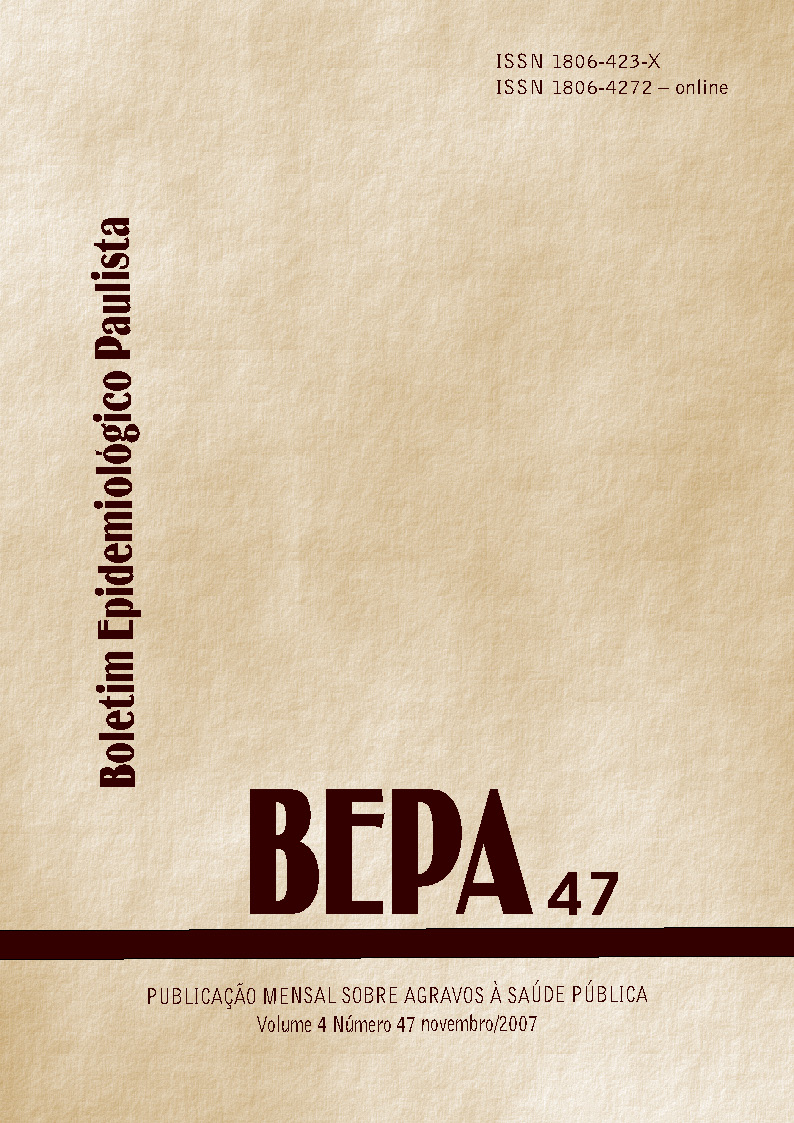Abstract
Amblyomma cajennense is a tick considered important by medical and veterinary reasons, which transmits Brazilian Maculous Fever (FMB), and responsible, as well, by economical losses in cattle breeding, infesting grazing grounds and animals, as well as representing a nuisance for the population living in these areas. Collection techniques for infestation detection in the environment are applied in actions for the Surveillance of acarus in many cities, and the most widely known are the technique of the catching cloth and the dry ice technique. Two new techniques are presented in this study: the stick collection technique in the environment and the fastener technique for collection in animals. The first was tested and applied during surveillance actions of the municipal government of the city of SãoPaulo, and the second in animals apprehended in the Zoonosis Control Center. The stick collection technique is designed to promote the safety of the staff while handling the animals, reducing human exposition in the infested area; the fastener technique allowed easier collection of the fixed tick, preserving it whole, therefore allowing identification.
References
Guimarães JH et al. Ectoparasitos de Importância Veterinária. São Paulo: Editora Plêiade/Fapesp 2001; 218p.
Pessôa SB, Martins AV. Parasitologia Médica. 11ª ed. Editora Guanabara Koogan.
CVE. Centro de Vigilância Epidemiológica “Prof. Alexandre Vranjac”. Secretaria de Estado da Saúde de São Paulo. Febre Maculosa: Informe Técnico 1. São Paulo, 2002. Disponível em: ftp://ftp.cve.saude.sp.gov.br/doc_tec/ZOO/IF_FMB2.pdf.
Sucen. Superintendência de Controle de Endemias. Secretaria de Estado da Saúde de São Paulo. Manual de Vigilância Acarológica. São Paulo, 2004; 62 p. Disponível em:
Secretaria de Estado da Saúde de São Paulo. Secretaria de Estado da Saúde de São Paulo.
Arzua M. Bioecologia do parasitismo de carrapatos (Acari: Ixodidae) em aves do bosque Reinhard Maack, Curitiba, Paraná e caracterização molecular, diagnóstico morfológico e descrição da larva de Amblyomma aureolatum (Pallas, 1772). Curitiba, 2002. [Dissertação de Mestrado em Ciências Biológicas – Universidade Federal do Paraná].

This work is licensed under a Creative Commons Attribution 4.0 International License.
Copyright (c) 2007 Sandro Marques, Moacyr Giovanini Dalbon
